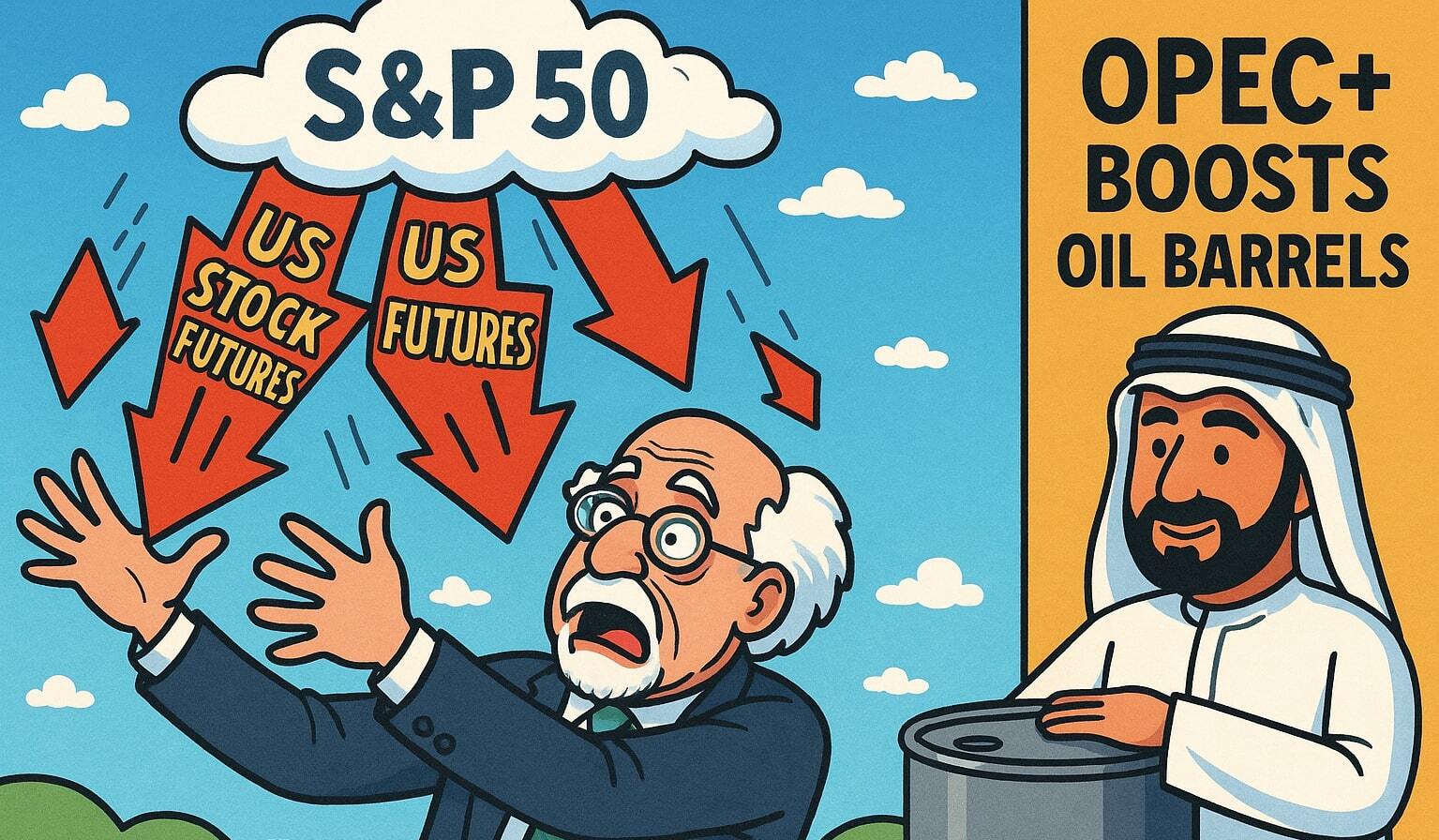US Stock Futures Dip Following S&P 500's Longest Winning Streak
US stock futures retreated on Monday, signaling a pause after the S&P 500 (^GSPC) wrapped up its longest winning streak in over two decades. Futures linked to the S&P 500 (ES=F) saw a decline of 0.7%, while Dow Jones Industrial Average (YM=F) futures slid 0.6%, and Nasdaq 100 (NQ=F) futures dropped by 0.7%. Investors have been riding a wave of optimism, largely driven by early signals that the US and China are inching toward the negotiating table for trade discussions. However, this optimism took a step back after President Trump stated on Sunday that he had no plans to meet with Chinese President Xi this week, although he emphasized his desire for a "fair deal" with China.
The dip in futures comes on the heels of a strong rally that saw the S&P 500 close with its longest positive streak since November 2004. The broad market index surged nearly 1.5% on Friday, its ninth consecutive day of gains. The momentum was fueled by speculation surrounding the possibility of a trade deal between the US and China. While Chinese officials have hinted at reopening trade talks, no concrete details or agreements have emerged yet.
Oil Prices Continue to Fall Amid OPEC+ Production Surge
Meanwhile, oil prices (CL=F) have continued to experience significant downward pressure. US crude oil prices fell by nearly 4%, dropping to $56.19 per barrel, the lowest levels since 2021. This comes as OPEC+ agreed to increase production by an additional 411,000 barrels per day in June, continuing the production surge that began in May. The decision has added to concerns over a supply glut, with oil prices now down more than 20% this year alone, largely driven by fears of a potential recession exacerbated by trade tensions and the uncertainty surrounding President Trump’s tariffs.
Global benchmark Brent crude (BZ=F) also saw a sharp decline, losing 3.33% to settle at $59.25 per barrel. These price movements follow OPEC+’s decision to unwind production cuts, with the group raising output by a total of 960,000 barrels per day over the course of April, May, and June, accounting for a 44% reversal of cuts agreed upon since 2022. This surge in oil production comes at a time when global demand is facing headwinds due to broader macroeconomic concerns and ongoing trade disputes.
Federal Reserve's Upcoming Meeting and Economic Outlook
Looking ahead, all eyes are on the Federal Reserve as it begins a crucial two-day policy meeting on Tuesday. The central bank is expected to maintain the current interest rates despite mounting pressure from President Trump, who has repeatedly called for rate cuts to stimulate economic growth. However, Jerome Powell, the Chair of the Federal Reserve, is likely to hold firm, as the economy remains in a delicate balance. Inflation continues to run above the Fed's target, while economic growth is slowing, making it difficult for the central bank to choose a clear course of action.
Recent economic data has added to the Fed's dilemma. The GDP report for the first quarter of 2025 showed a contraction, marking the first decline in the US economy in three years. This was largely driven by a rush by importers to stockpile goods ahead of the expected tariffs. However, the April jobs report painted a more optimistic picture, showing resilience in the labor market despite the uncertainty triggered by the trade disputes. With inflation still above the Fed’s 2% target, Powell and his colleagues will likely focus on the ongoing "tug-of-war" between inflationary pressures and the slowing economy.
Investors are also awaiting key economic data this week, including the jobless claims report and manufacturing activity data. These indicators will provide a clearer picture of the US economic outlook, which will be a major factor in shaping the Fed’s future policy moves.
Earnings Season Rolls On with High-Profile Reports
Earnings season continues to roll on, with Ford (F), Palantir (PLTR), Disney (DIS), and AMD (AMD) all set to report their quarterly results. These earnings reports will be critical in determining how the market reacts to the current economic conditions. Palantir, in particular, has been drawing attention due to its role in the data analytics space, with investors closely monitoring its ability to scale its operations and maintain growth amid macroeconomic challenges.
The Nasdaq 100 (NQ=F), which is heavily weighted toward technology stocks, could be significantly influenced by the results from AMD and Disney. AMD, a leader in semiconductor technology, has seen strong performance amid growing demand for chips in the AI and gaming sectors. On the other hand, Disney has faced challenges as it navigates shifts in consumer behavior and the ongoing transformation of its media business.
US Stock Futures: Market Sentiment Hinges on Federal Reserve's Decisions
As the US stock futures cooled, investor sentiment is being shaped by a mix of economic uncertainty and market-moving policy decisions. The S&P 500 (ES=F) futures, currently trading at 5,659.25 (-0.87%), are reflecting the cautious outlook, while the Dow Jones Industrial Average futures and Nasdaq futures continue to show a similar downtrend. The market is grappling with the dual concerns of inflationary pressures and the potential slowdown in economic growth, exacerbated by geopolitical risks.
Berkshire Hathaway's Transition and Broader Market Impact
The Berkshire Hathaway (BRK-B, BRK-A) succession news also created waves in the broader market. Warren Buffett’s announcement that Greg Abel will take over as CEO by the end of the year marks the end of an era for the company. While Buffett reassured investors that he wouldn’t be stepping away completely, his decision could still have significant implications for market sentiment, particularly given Berkshire Hathaway’s status as one of the largest companies in the S&P 500. The company’s strong performance, with Berkshire Hathaway stock rising by over 17% this year, contrasts sharply with the S&P 500’s (GSPC) 3% drop, underscoring the resilience of Buffett’s investment approach even in volatile times.
How investors react to these leadership changes will be crucial, not just for Berkshire Hathaway, but for the broader market as well. The company’s vast portfolio and influence in global markets mean that any significant shift in its management could have far-reaching consequences.



















